
Leiah Katz
About the Author
Our today’s guest is Leiah Katz, a respected currency archivist with extensive experience in coin explorations and authenticity verification of the most precious items on the market. Having been a member of the American Numismatic Association for more than 20 years, she had an opportunity to work with the most affluent auction houses and collections to catalog, study, and preserve coins.
Mrs. Katz’s background is indeed impressive. After receiving a fine education at the University of Oxford (MA in Art History), she established a private numismatic network for numismatists to share their achievements and collaborate on rare coin research and cross-institutional preservation. Her personal victory came when she contributed to the recovery of stolen 18th-century ceremonial coins, helping trace their provenance and facilitating their return to the Jewish Museum in Prague.
As serious as it can be, we are pleased to introduce Leiah’s take on a surprisingly common question: how many quarters are in a roll of $10?
Follow Leiah on Social Media



Before We Count: What You Should Know
How much is in a roll of quarters? This is the question that may seem insignificant, but for numismatists, it is a point of high importance. No matter what one is planning to do with a coin collection they own, knowing how many quarters go in a roll and how these work may save time and prevent mistakes beforehand.
Are they convenient? What do they look like? And why do professional numismatists pay so much attention to rolls as standardized tools to manage their collections efficiently? Following the example of reputable grading agencies, we are to present a brief guide, discovering the main points in the concept of how much in a roll of quarters coins there is and the practical details you need to make this experience more profitable.
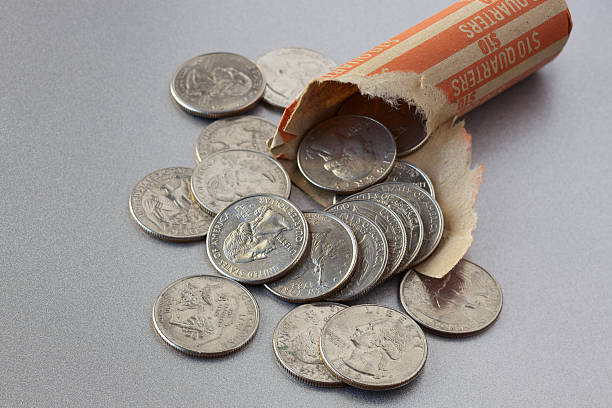
Basics Come First: What Is a Coin Roll?
As such, a coin roll is a cylindrical bundle of coins, wrapped in paper or stored in a plastic tube, typically organized in accordance with denomination, quantity, or type. The main purpose of such assemblages is to make it easier to count, store, sell, transport, or exchange units of currency when in greater quantities than one piece.
As numismatic experts assert, it is about efficiency and a sense of control over possessions, especially when they are worth more than the combined face value of separate items. Besides, some employ rolls in order to deposit coins at financial institutions or manage complex operations like laundromats, vending machines, parking meters, and the like.
As for its history, coin rolls saw the rise in popularity in the early 20th century, when businesses looked for faster ways to process large volumes of coins. However, collectors also found it useful to arrange metal plates in rolls, weighing or counting them manually. As technologies progressed, there appeared mechanical coin-wrapping machines in the 1920s, which established a standard for packaging and exchange. But how much money is in a roll of quarters?
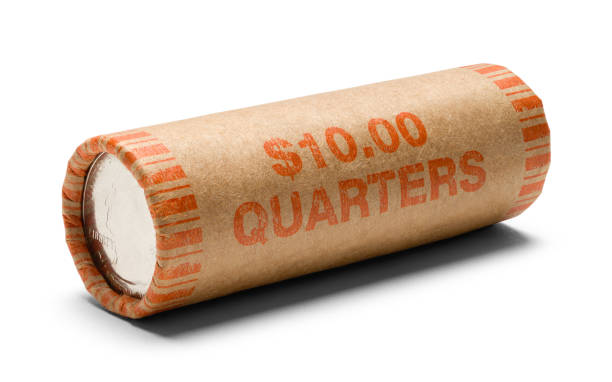
Standard Roll Quantities in the US
How many quarters come in a roll? And what about other denominations, too? In the United States, there are strict rules that define how much comes in a roll of quarters or instances of other types. Each denomination has a specific number of items per roll, with a fixed total value when filled. Here is a quick table describing the current patterns of how many quarters in a roll of $10 should be, established in the US as of now.
| Coin Type | Coins per Roll | Value per Roll |
| Pennies (1C) | 50 pcs. | $0.50 |
| Nickels (5C) | 40 pcs. | $2.00 |
| Dimes (10C) | 50 pcs. | $5.00 |
| Quarters (25C) | 40 pcs. | $10.00 |
| Half-Dollars (50C) | 20 pcs. | $10.00 |
| Dollar Coins ($1) | 25 pcs. | $25.00 |
When breaking down how much money in a roll of quarters really means, we should note that the standard is 40 coins, which together constitute $10.00. In fact, these are among the most frequently rolled units of currency because of their widespread use in daily trading, vending machines, and other devices that require on-site payments (=cash). No wonder many numismatists are concerned about how many quarters in a roll of quarters they actually have.
The Detailed Look: Aspects That Go Beyond the Number of Quarters in a Roll
There are also standards that determine how many dollars in a roll of quarters should be, as well as its physical characteristics (which include dimensions and materials). Here are carefully interpreted instructions for those who design these units for the sake of convenience, accuracy, and efficiency, not to mention.
Physical Characteristics
How many dollars are in a roll of quarters? Simple calculations – as we have stated above, it is only 40 items per roll, and their characteristics usually comply with the following dimensions:
- Length: 3 inches (7.6 cm)
- Diameter: 0.8 inches (2 cm)
- Weight: Just under 0.5 pounds (~226 grams)
Why does it happen? Since 1965, all the units of currency with the face value of 25 cents have the same size and weight (24.26 mm diameter, 5.67 grams); this is why rolls remain the same as well. But what about materials?
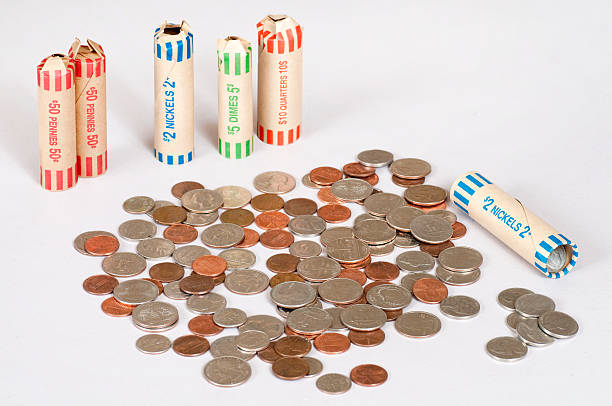
Materials Used
There are two general types of coin rolls, according to the materials employed in production:
- Paper: Rolls made of paper, as a rule, are color-coded (with orange referring to quarters) and either pre-crimped or flat. In general, these are used by banks and private collectors due to their low cost and ease of use.
- Plastic: A more solid version, used mainly by professional collectors and dealers, is a clear, reusable container which is more durable and, hence, protective from moisture, wear, or environmental damage.
Note: While paper is yet cheaper, plastic seems like a more long-lasting option to store coins. Nevertheless, the choice should be made according to one’s needs, preferences, and further application.
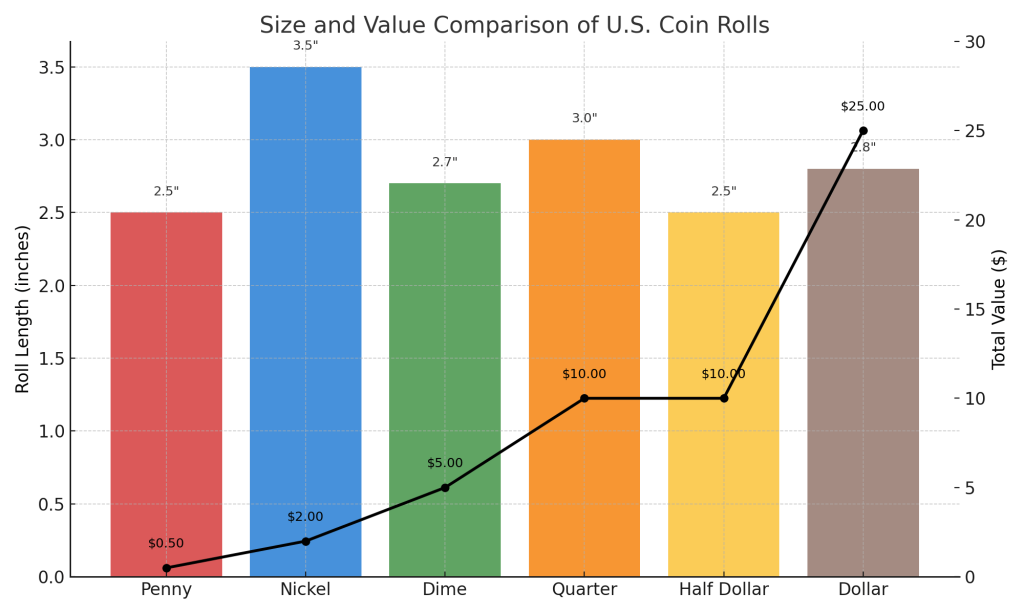
Why Roll Contents Matter
Understanding how many quarters in a roll of 10 dollars there are and the value they represent is vital. However, newcomers may not pay enough attention to this matter. For you to grasp the importance of this information, we shall prove our position from the expert’s perspective.
For Banking and Financial Transactions: It is surely obvious that banks and credit associations (used to) rely on coin rolls as their primary tools to make processes faster and track inventory on the spot. Where are these used? Well, quarter rolls are employed when preparing change, making small deposits, and withdrawing.
For businesses handling cash: On the other hand, businesses may also need cash to use in vending machines, laundromats (though these are trite), and other establishments that require the input of coins. Consequently, knowing how many quarters in a $10 roll should be is the key to flawless operations without mistakes to correct.
For coin collectors and hobbyists: Finally, there is a group of people, consisting of us, collectors, that need rolls to look for rare instances and errors, too. Without being aware of what these or those coins look like, one may fall into the trap of flaws and counterfeits.
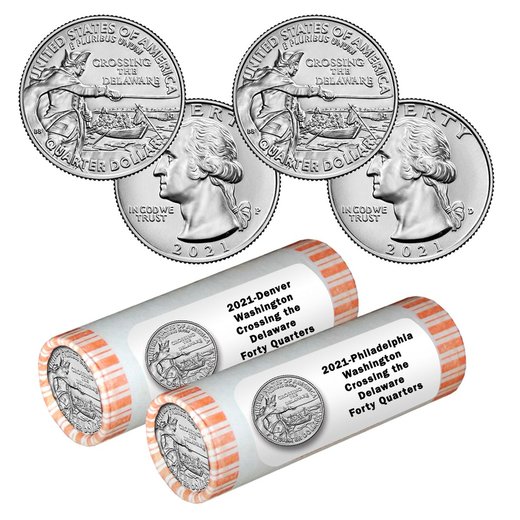
Seal the Deal: How to Put Quarters in a Roll
As soon as one has learnt how many quarters are in a $10 roll, it might be reasonable to turn to rolling techniques at last. Although it might seem either overly easy or complicated, in fact, the approach is rather consistent, straightforward, and easy to follow.
- Gather Your Quarters: Sort your numismatic creations or take a look at the collection to separate out any that are erroneous, foreign, or collectible.
- Select Exactly 40 Quarters: Use your hands or a special counter to choose exactly 40 coins with a total of $10.00.
- Choose the Right Wrapper: As we have mentioned earlier, you are free to utilize a standard orange paper wrapper or a plastic quarter roll tube, with both being useful under certain circumstances.
- Put Coins into Wrapper: When using a paper wrapper, fold one end before inserting coins. Drop the coins in vertically to stack them neatly.
- Seal the Roll: When the roll is filled, fold or crimp the open end of the wrapper tightly to prevent coins from falling out. This is obvious, though.
- Label If Needed: To distinguish the roll in the seconds, write denomination and total value on its surface (e.g., “Quarters $10”).
Not All Rolls Are the Same
Indeed, how many coins in a roll of quarters should be is usually defined by the standards of a given country, yet those rules imposed by the US Mint are often considered international. However, there are some exceptions and slight modifications in the patterns of roll use and their appearance.
- Canada, for example, uses similar rolls, but with different counts and wrapper colors.
- European countries often employ coin tubes or blister packs.
- Japan and others may rely more heavily on coin-counting machines and do not commonly use paper rolls.
Sometimes, rolls might be unusually assembled, which is characterized by non-standard quantities or alternative materials (like foil) for packaging. However, these are rare, and stumbling upon them on the numismatic market is like finding a treasure right under your feet.
How many quarters are in a roll of quarters? Here is what the 2-euro rolls from Malta may look like in 2025:
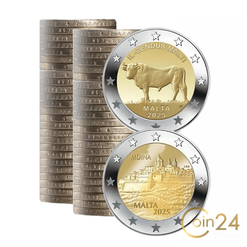
Reliable Places to Get Quarter Rolls
Now that we have tackled the problem of how many in a roll of quarters there are, it is high time that we turned to resources to know. If you would not like to make rolls on your own, fear not: they can be ready-made and sold by reputable dealers at reasonable prices. Here is where to purchase rolls without the fear of being scammed:
- Mints: Official institutions like the US Mint sell relevant coin rolls on a regular basis. For instance, as of May 2025, the US Mint offers American Women Quarters 2025 Rolls (e.g., Dr. Vera Rubin, Juliette Gordon Low, Ida B. Wells), etc.
- Banks: Most banks provide standard coin rolls, and if you are unsure how many quarters in a 10 dollar roll there are, the answer is 40. These can be requested at the teller window, off limits. Some institutions, however, may limit how many you can get or require advance notice for large quantities.
- Online coin dealers: The most apparent resources are probably online coin dealers like those presented at Littleton Coin, APMEX, or even eBay. However, always verify seller ratings and return policies when ordering online.
- Retail Stores: Last but not least, large retailers like Walmart or Target and grocery stores occasionally provide coin rolls at their customer service desks, particularly if one is paying with cash and asks for change.
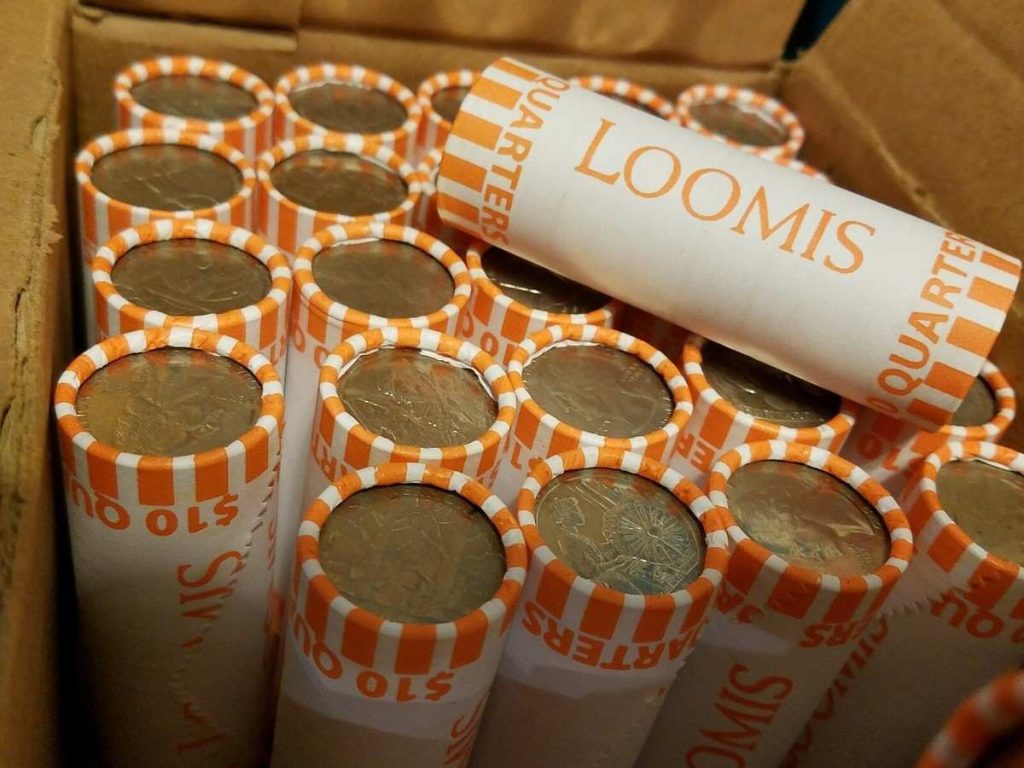
Smart Tips for Aspiring Quarter Collector
Quarter collecting is a complicated endeavor, but with the right preparation, this process may get less stressful anyway. So, what should one do so as to make this experience as rewarding as possible?
Identifying Valuable Quarters
Keep in mind that not all quarters are worth 25 cents only. The most outstanding pieces are usually sold for much higher prices, depending on special attributes like minting errors, key dates, mint marks, limited mintages or series, Mint State grades, proof designations, and even more.
To verify the origin and potential value of each numismatic creation, we recommend that you use trusted tools like Coin ID Scanner, which serves as a universal tool for coin professionals of all levels.
Storage and Preservation of Coin Rolls
Proper storage protects your collection from damage and helps retain value over time:
- Use coin tubes or acid-free paper wrappers to hold rolls.
- Store in a cool, dry place away from direct sunlight and humidity.
- Avoid touching coins with your bare hands (prefer gloves in turn).
- Label rolls clearly with date, mint mark, and condition.
How many coins are in a roll of quarters? It is all about 40 coins, which may hold the potential of thousands in change. Explore and collect – this is what it takes to obtain the best rolls ever known.